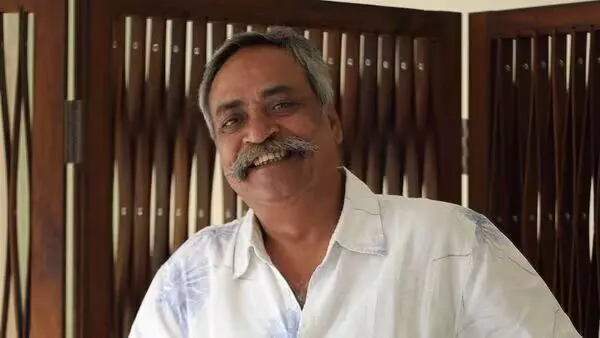‘Kuch khaas hai zindagi mein’: India’s advertising guru Piyush Pandey passes away
His unmistakable moustache, booming laughter, and deep-rooted love for the everyday Indian became synonymous with an entire generation of advertising
By Anoushka Caroline Williams
Hyderabad: Piyush Pandey, the creative titan who reshaped the soul and syntax of Indian advertising, passed away on Thursday. With him goes not just a man, but an entire era of storytelling, one where advertisements spoke the language of India, laughed like its people, and tugged at the nation’s collective heartstrings.
For over four decades, Pandey was the face and voice of Ogilvy India. His unmistakable moustache, booming laughter, and deep-rooted love for the everyday Indian became synonymous with an entire generation of advertising that celebrated simplicity, emotion, and authenticity.
A Journey from Cricket Fields to Creative Heights
Born in Jaipur in 1955, Piyush Pandey’s path to advertising was anything but direct. Before discovering his calling, he was a Ranji Trophy-level cricketer, a tea taster, and even a construction worker. But it was in 1982, when he joined Ogilvy & Mather (now Ogilvy India) as a young copywriter, that his tryst with creativity truly began.
“I didn’t know what advertising was,” he once admitted in an interview. “But I knew stories. I knew people. And I knew how they talked, what they felt, and what made them smile.”
That instinct to listen, to observe, and to translate real life into relatable words would define everything he created.
Changing the Language of Indian Advertising
When Pandey entered the industry, most advertisements were polished, urban, and English-speaking, disconnected from the pulse of India. He broke that barrier with the revolutionary idea that emotion and colloquialism could be powerful tools of communication.
His campaigns for Fevicol, Asian Paints, Cadbury, and Hutch became part of India’s cultural fabric:
• “Fevicol ka jod hai, tootega nahi” became a national metaphor for resilience.
• “Kuch khaas hai zindagi mein” turned Cadbury into an emotion, not a product.
• “Har khushi mein rang laaye” gave Asian Paints its warmth and intimacy.
• And that simple boy-and-dog story for Hutch (“You and I, in this beautiful world”) showed that advertising could be pure poetry.
The Reluctant Icon
Despite becoming one of the most recognizable names in Indian advertising, Pandey wore his fame lightly. He disliked the word “guru” and preferred to call himself a teammate.
“A Brian Lara can’t win for the West Indies alone,” he once quipped. “Then who am I? I’m part of a team. That’s where the joy lies.”
Under his leadership, Ogilvy India grew into one of the world’s most respected creative agencies, winning countless awards while nurturing a new generation of storytellers. For Pandey, success was not about accolades but the impact of how deeply a story could resonate.
Global Recognition, Local Heart
In 2018, Pandey and his brother, filmmaker Prasoon Pandey, made history as the first Asians to receive the Lion of St. Mark, the Cannes Lions’ lifetime achievement award for creativity. It was a moment that validated decades of work rooted in Indian emotion but admired globally for its universality.
Yet, even at the peak of fame, Pandey remained deeply Indian in his sensibilities. “If you’re trying to talk to an Indian audience,” he often said, “don’t forget who they are. They laugh easily, they cry easily, and they value honesty. That’s who we are.”
Beyond the Ad World
While his professional life was monumental, those who knew Pandey personally speak of his humility, generosity, and infectious laughter. Cricket remained his lifelong passion; he often compared brainstorming sessions to cricket matches: unpredictable, thrilling, and best enjoyed as a team.
He was also a mentor to hundreds of young creatives, many of whom credit him with teaching them that great ideas come not from ivory towers but from chai stalls, bus stops, and street corners.
“Listen to people,” he used to say. “They’ll tell you what they need to hear; you just have to find the words.”
The Slogans That Shaped a Nation
Pandey’s creativity wasn’t limited to brands. He also lent his voice to political and social campaigns that defined moments in India’s recent history, most famously, the “Ab ki baar, Modi sarkar” slogan that became a rallying cry during the 2014 general elections.
While that campaign was divisive in political circles, it stood testament to Pandey’s understanding of the nation’s pulse, his ability to distill complex emotions into a few simple, unforgettable words.
The Fevicol Bond
In 2023, after more than 40 years at Ogilvy, Pandey stepped down as Executive Chairman and Creative Director, moving into an advisory role. It was the end of one of the longest and strongest partnerships in Indian business history.
His departure marked not just retirement, but a graceful handover, from a man who had built an empire of ideas to those he had inspired along the way.
The Legacy Lives On
Piyush Pandey is survived by his family, his colleagues who became his creative kin, and a body of work that continues to define what Indian advertising feels like.
He once said, “Somewhere, you need to touch the hearts. No audience is going to see your work and say, ‘How did they do it?’ They will say, ‘I love it.’”
That philosophy, emotion over execution, heart over hype, remains his greatest gift to the industry he loved.
As India remembers the man with the moustache who made it smile, cry, and believe again in the power of a good story, one truth stands tall: Piyush Pandey didn’t just create advertisements. He created memories. And in doing so, he gave India a voice of its own.